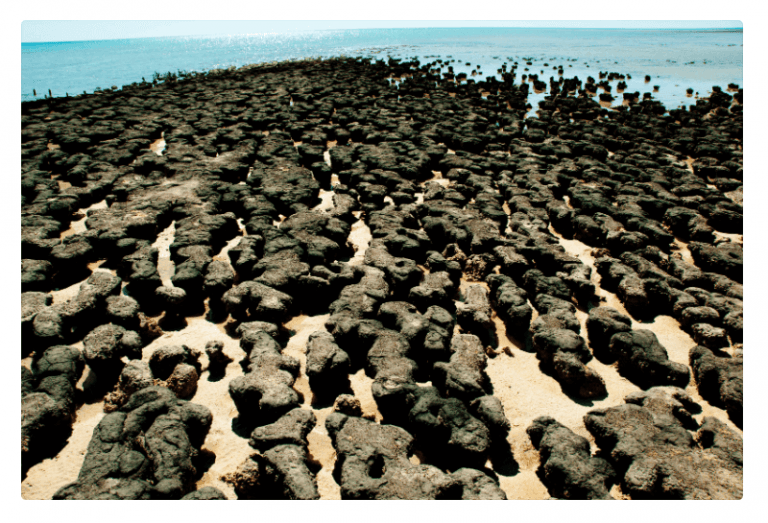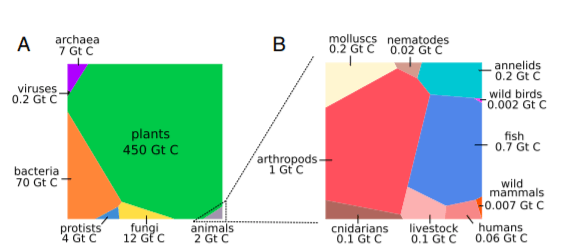Share this
Ode to the Pale Blue Dot
by Ava on 22/Apr/21
Soil is the skin of our planet. In just one tablespoon of soil, we can find more living organisms than there are humans on all of earth.
Regardless of species or locale, we all share a common, vital asset: the very planet we call home. With its immense beauty, this “Pale Blue Dot” (1) provides us far more than just a place to live. It is home to complex ecosystems working together in astonishing ways, creating the perfect conditions to sustain us all. Which is why celebrating this miraculous planet only one day a year feels like a non-tribute, a woefully underwhelming afterthought. Discussions of our home must be front and center of our attention everyday. But Earth Day offers us the opportunity to engage with and appreciate the many ways in which we rely on Earth, and why it is so urgent to protect it. On this day, we celebrate Earth by honoring the ways it has come to support our lives.
Earth Day presents a topic very close to home for scientists and science enthusiasts who specialize in soil health. We are especially curious about ecosystem complexities, and even more eager to share our findings with the world. We believe that a passion for learning and knowledge-sharing is vital to enabling ways in which we, as a species, may benefit from our planetary ecosystem in a sustainable way.
As terrestrial organisms, when we look down upon Earth, what we see is most often soil. It is only natural then, that “soil” and “earth” are used interchangeably. Soil is the skin of our planet. In just one tablespoon of soil, we can find more living organisms than there are humans on all of earth. Think about it like this: imagine having hands big enough to hold all of Earth’s humans with plenty of room to spare! That’s how large we are when compared to these miniscule organisms. Though small, these powerful life-giving forces have worked together with other life forms for billions and billions of years, building this place we now call home. In fact, all of life during the billion + years of the Archean era, was strictly bacterial. (2)
A key point in time in the history of microbes on our planet dates back to about 3.5 billion years ago, when photosynthetic bacteria are thought to have first appeared on Earth. These bacteria, known as “cyanobacteria” or “blue-green algae” formed adhesive structures on the surfaces of rocks in calcareous mounds, made of layers of the lime-secreting cyanobacteria and trapped sediment. These structures called “stromatolites,” are responsible for introducing oxygen into our atmosphere. Cyanobacteria are still around today, and are one of the largest and most important groups of bacteria on Earth. Many Proterozoic oil deposits are attributed to the activity of cyanobacteria. They are also important providers of nitrogen fertilizer in agriculture and often play a key role in maintaining the stability of the surface crusts of semi-deserts, and the fertility of farm soils in arid regions. Cyanobacteria have also been tremendously important in shaping the course of evolution and ecological change throughout Earth's history. Before they emerged during the Archaean and Proterozoic Eras, the Earth’s atmosphere had a very different chemistry, unsuitable for life as we know it today. (3)
What’s more, plants are able to photosynthesize today thanks to a special cooperation with cyanobacteria, through “endosymbiosis.” This process involves a unicellular protist engulfing a free-living photosynthetic cyanobacterium and retaining it, instead of digesting it in the food vacuole. The captured cell called the “endosymbiont” was later reduced to a functional organelle bound by two membranes, and transmitted vertically to subsequent generations. This unlikely set of events established a new eukaryotic lineage supergroup called "Plantae," encompassing many photosynthetic algae and land plants. (4)

Figure 1. Hamelin Pool Stromatolites - West Australia
Plants are now the dominant kingdom of life on our planet, with a biomass of about 450 gigatons of carbon (GT C). The second major biomass component of Earth is bacteria (≈70 Gt C), constituting ≈15% of the global biomass. Other groups, in descending order, are fungi, archaea, protists, animals, and viruses, which together account for the remaining <10%. (3)

Figure 2. Graphical representation of the global biomass distribution by taxa. (2)

Table 1. Summary of estimated total biomass for abundant taxonomic groups. (2)
Combined with plants, which contain remnants of cyanobacteria in green cells allowing them to proliferate, bacteria are responsible for nearly 83% of earth’s biomass. Even more so, if we consider organisms that feed on plants, including ourselves. With that in mind, let’s shift our perspective again, and envision how it is actually bacteria that have hands so large, so all-encompassing, they can not only hold all humans, but they can also feed us, enable us to breathe, and give us life. Not so small after all!
With the power of our imaginative minds, along with our outstanding communication, cooperation and tool-building capacities, we have found many ways to utilize the resources of Earth throughout time. But as we have learned, with great power comes great responsibility. “We are creatures capable of using our compassion and our intelligence; our technology and our wealth to make an abundant and meaningful life for every inhabitant of this planet.” - Carl Sagan, American astronomer and science writer.
To truly honor our planet, we must take our appreciation to the next level, making active choices both small and large in scale to protect and preserve it. In Sagan’s words, “We face a critical branch point in history, what we do with our world, right now, will propagate down through the centuries and powerfully affect the destiny of our descendants.” Much in the same way of microorganisms and plants, and how they've shaped our lives. We must join forces across industries, nations and political ideations, to allocate our resources to remedy the change we have caused to the climate of our planet. Only by doing so may we continue to live, to cherish and to celebrate our Pale Blue Dot, the only home we have ever known.
Author of this article:
Ava Mehrpour
Communications Specialist at Biome Makers
Bibliography
(1) Sagan, Carl. Pale Blue Dot: A Vision of the Human Future in Space. First edition. New York: Random House, 1994. Print.
(2) Knoll, Andrew H et al. “Life: the first two billion years.” Philosophical transactions of the Royal Society of London. Series B, Biological sciences vol. 371,1707 (2016): 20150493. doi:10.1098/rstb.2015.0493
(3) Bar-On, Yinon M et al. “The biomass distribution on Earth.” Proceedings of the National Academy of Sciences of the United States of America vol. 115,25 (2018): 6506-6511. doi:10.1073/pnas.1711842115
(4) Chan, C. X. & Bhattacharya, D. (2010) The Origin of Plastids. Nature Education 3(9):84
Share this
- June 2025 (2)
- September 2024 (1)
- August 2024 (1)
- July 2024 (1)
- June 2024 (2)
- May 2024 (2)
- April 2024 (2)
- March 2024 (1)
- February 2024 (1)
- January 2024 (1)
- November 2023 (1)
- October 2023 (1)
- September 2023 (1)
- August 2023 (2)
- July 2023 (2)
- May 2023 (2)
- April 2023 (3)
- March 2023 (3)
- February 2023 (2)
- January 2023 (1)
- November 2022 (1)
- October 2022 (2)
- September 2022 (1)
- August 2022 (3)
- July 2022 (3)
- June 2022 (1)
- May 2022 (5)
- April 2022 (7)
- August 2021 (1)
- July 2021 (1)
- May 2021 (1)
- April 2021 (4)
- November 2020 (3)
- October 2020 (4)
- September 2020 (1)
- August 2020 (3)
- July 2020 (1)
- June 2020 (1)
- May 2020 (2)